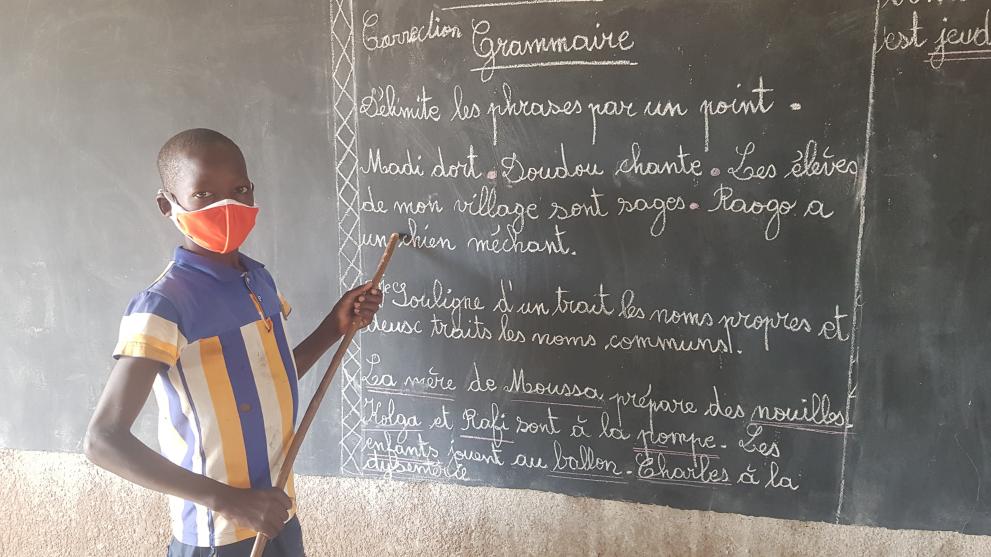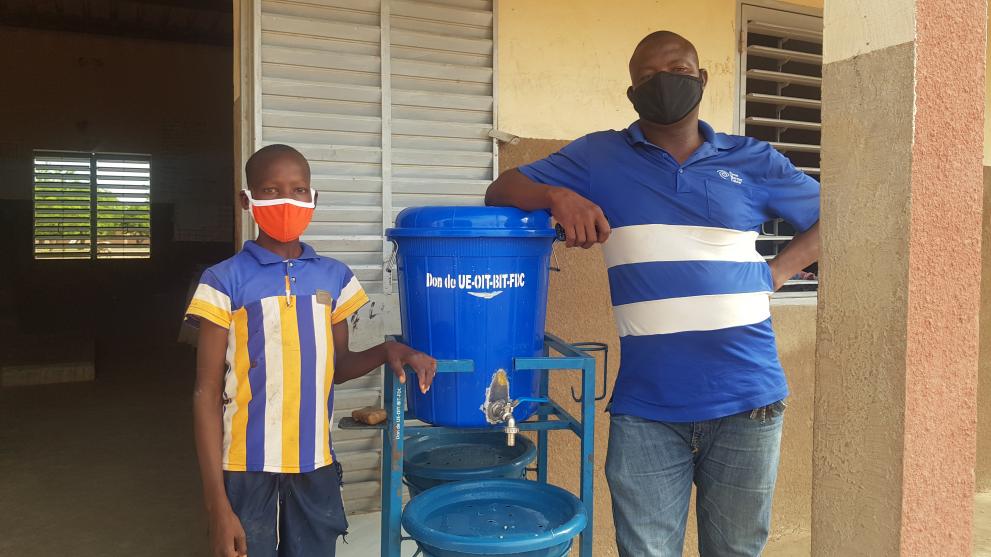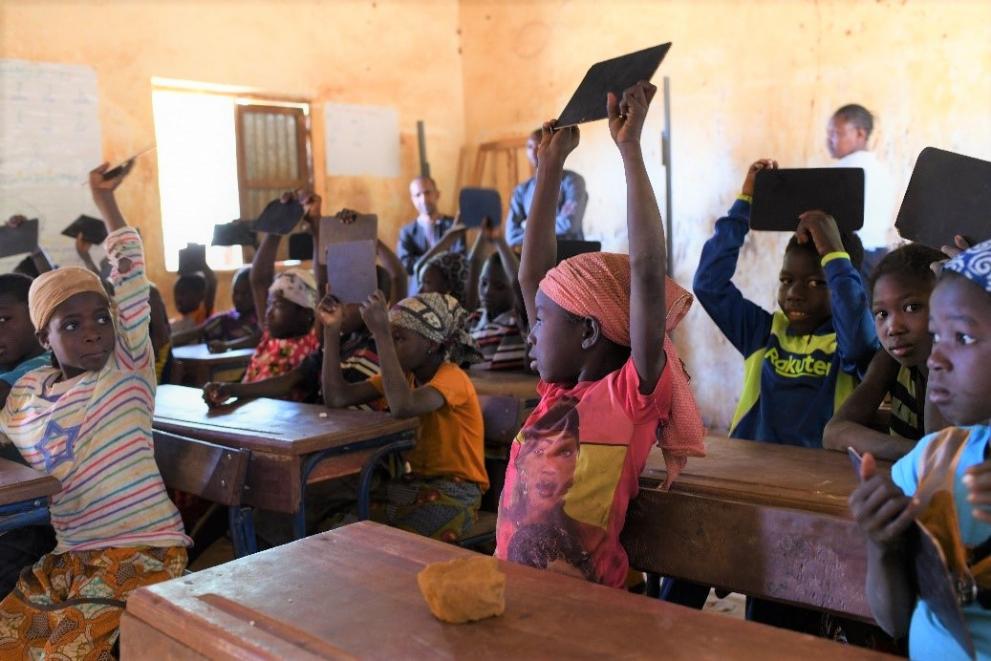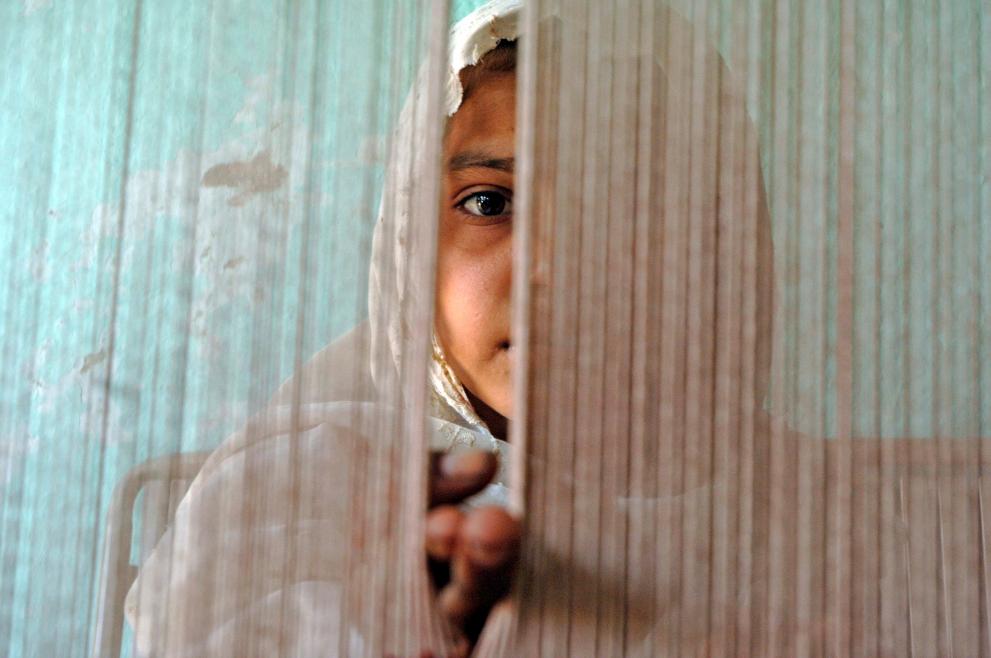Inoussa Kabore is 11 years old and is no longer working in the cotton fields since he has integrated the centre. He used to be a shepherd and work in the fields, helping farmers who would give him food and a small amount of money. He was not aware that children should not work or be forced to work.

Inoussa is happy that he no longer needs to work in the fields and will acquire knowledge, and later a job. If he were to give a message to parents who force their children to work or to friends that are still working, he would say that they should stop working and go to school because school is good.
I am happy because I will acquire knowledge and later a job.
Inoussa Kabore, 11 years old
Inoussa's uncle, Kabore Saidou agreed to take his nephew out of the cotton fields to put him in school. He realised that school had many advantages. He heard about the 'CLEAR Cotton' project thanks to the first authorities of the locality. “They made us understand that this project was aimed at fighting child labour by taking them out of cotton fields to put them in school. When we learned this, we were very happy and immediately decided to entrust our children to them so that they could go to school.”

He would like to invite parents who continue to send their children to work in the cotton fields to enrol them in school, because school will benefit them more.
“I am very grateful to the European Union and the ILO for what they do for the children of our locality. I would like to ask them to continue the project in order to get all the children out of the cotton fields, because this work is very difficult and is not made for children. Children need to go to school and acquire knowledge that will help them later."

71% of child labour is in agriculture. Cotton is one of the most common commodities produced with child labour and forced labour in at least 18 countries.
Child labour and forced labour are both present in the supply chain across the globe. Child labour is found in particular in Africa and Asia where cotton production systems are labour intensive and/or dominated by small-holder farms or by tenancy and sharecropping.

The ‘’Eliminating child labour and forced labour in the cotton, textile and garment value chains: an integrated approach’’ project, is co-funded by the European Union (EU) and the International Labour Organization (ILO), and it is implemented by the ILO in collaboration with the Food and Agriculture Organization (FAO).
The project aims at contributing to the elimination of child labour, in all its forms and in particular its worst forms, and forced labour in the cotton, textile and garment value chains in target producing countries. It covers Burkina Faso, Mali, Pakistan and Peru.
